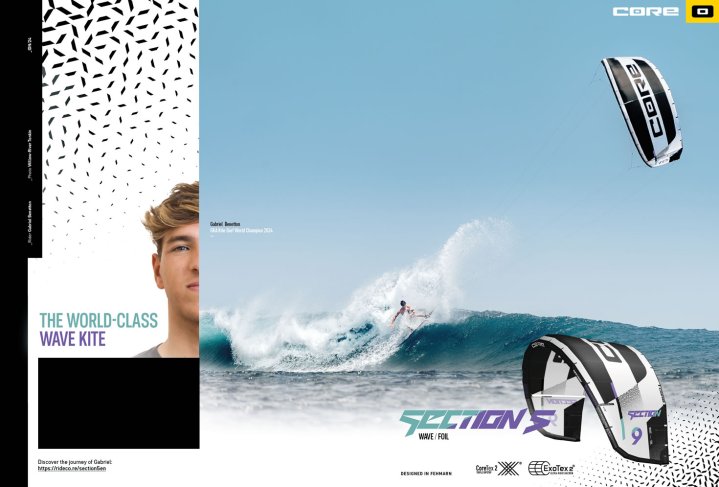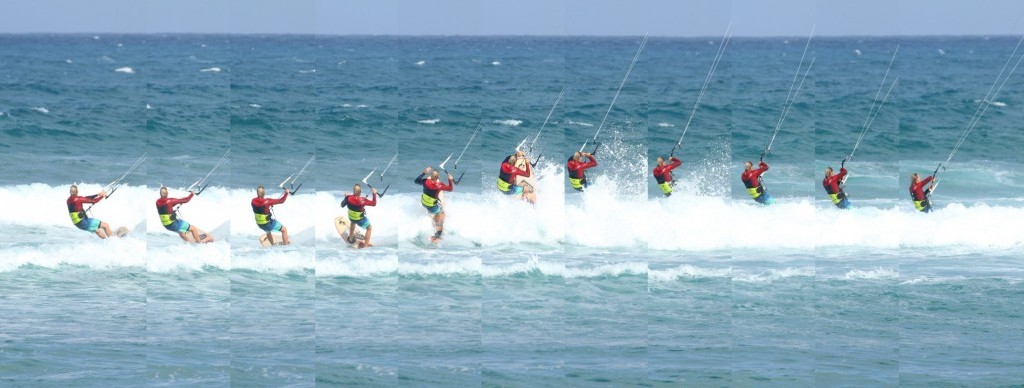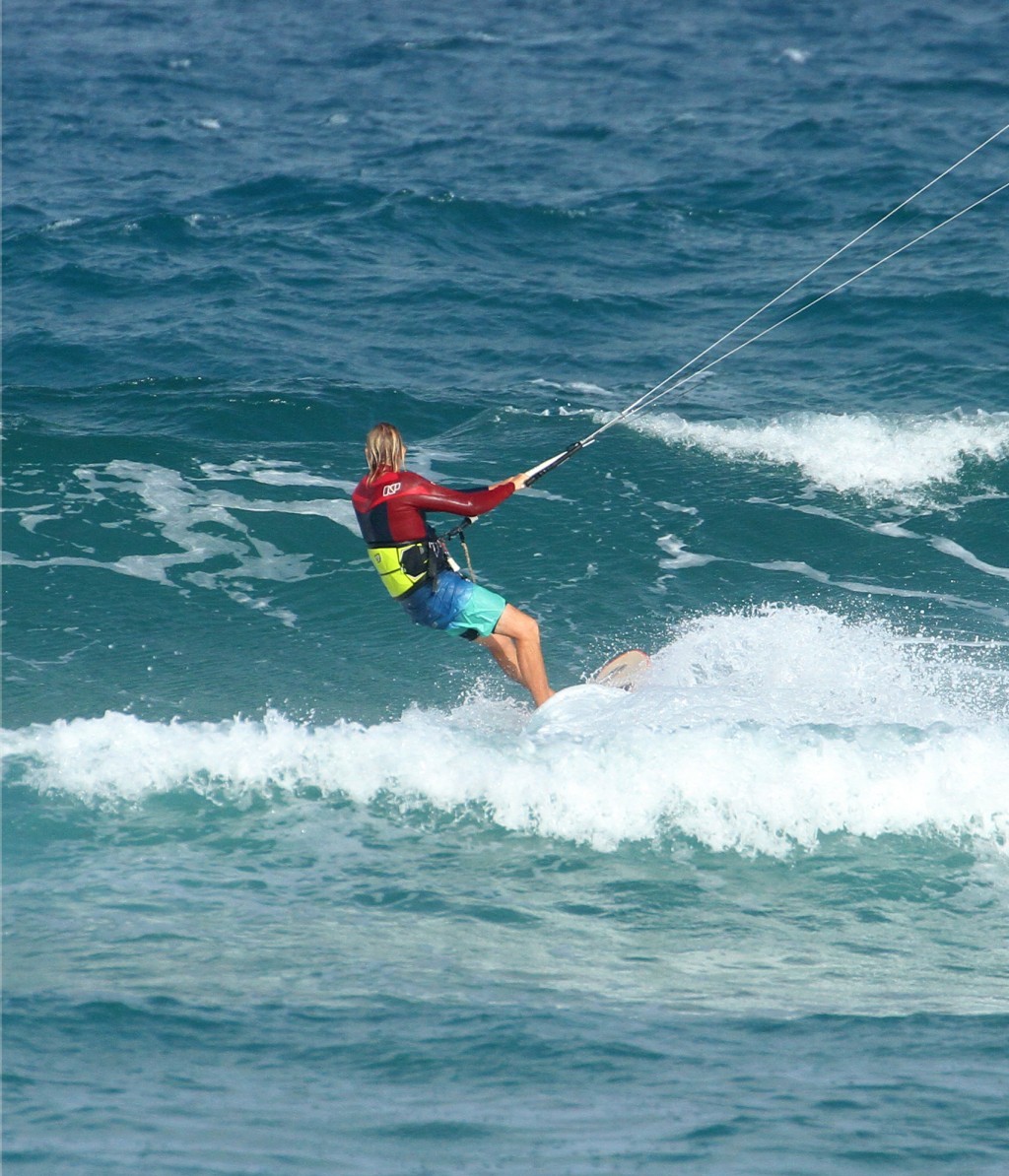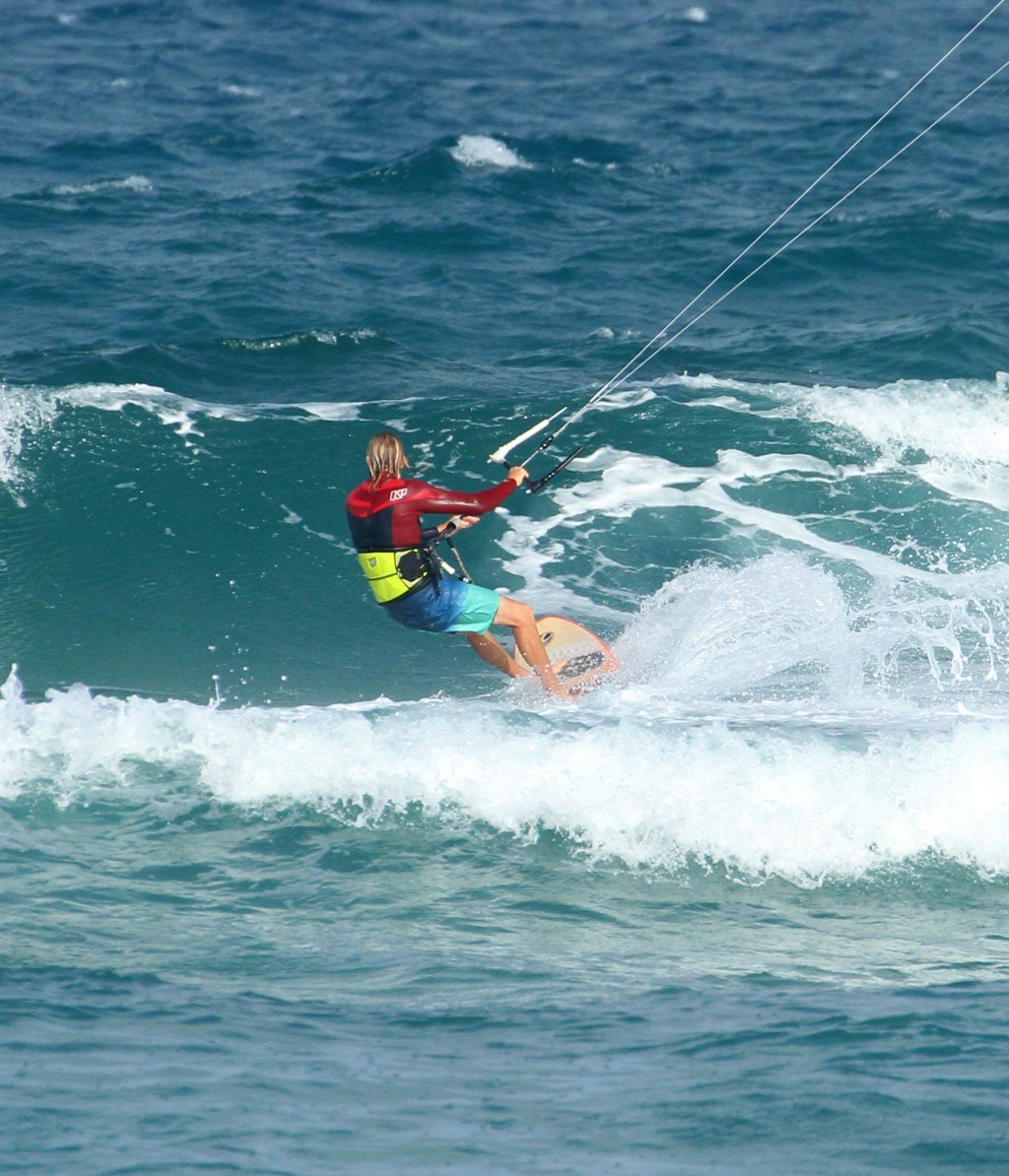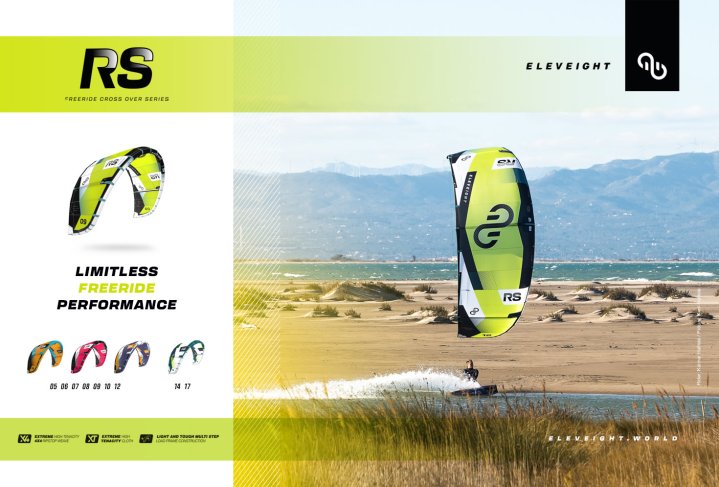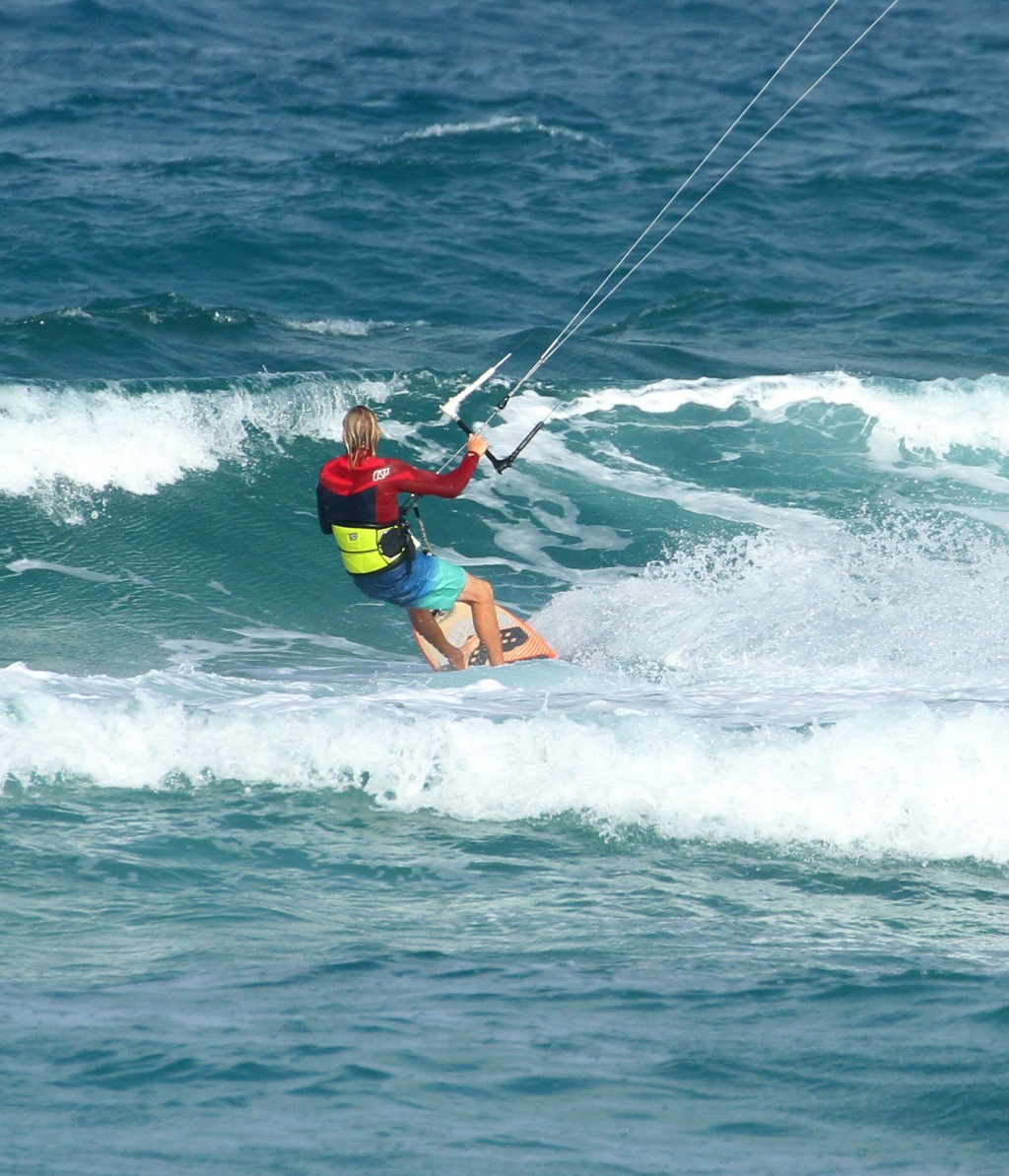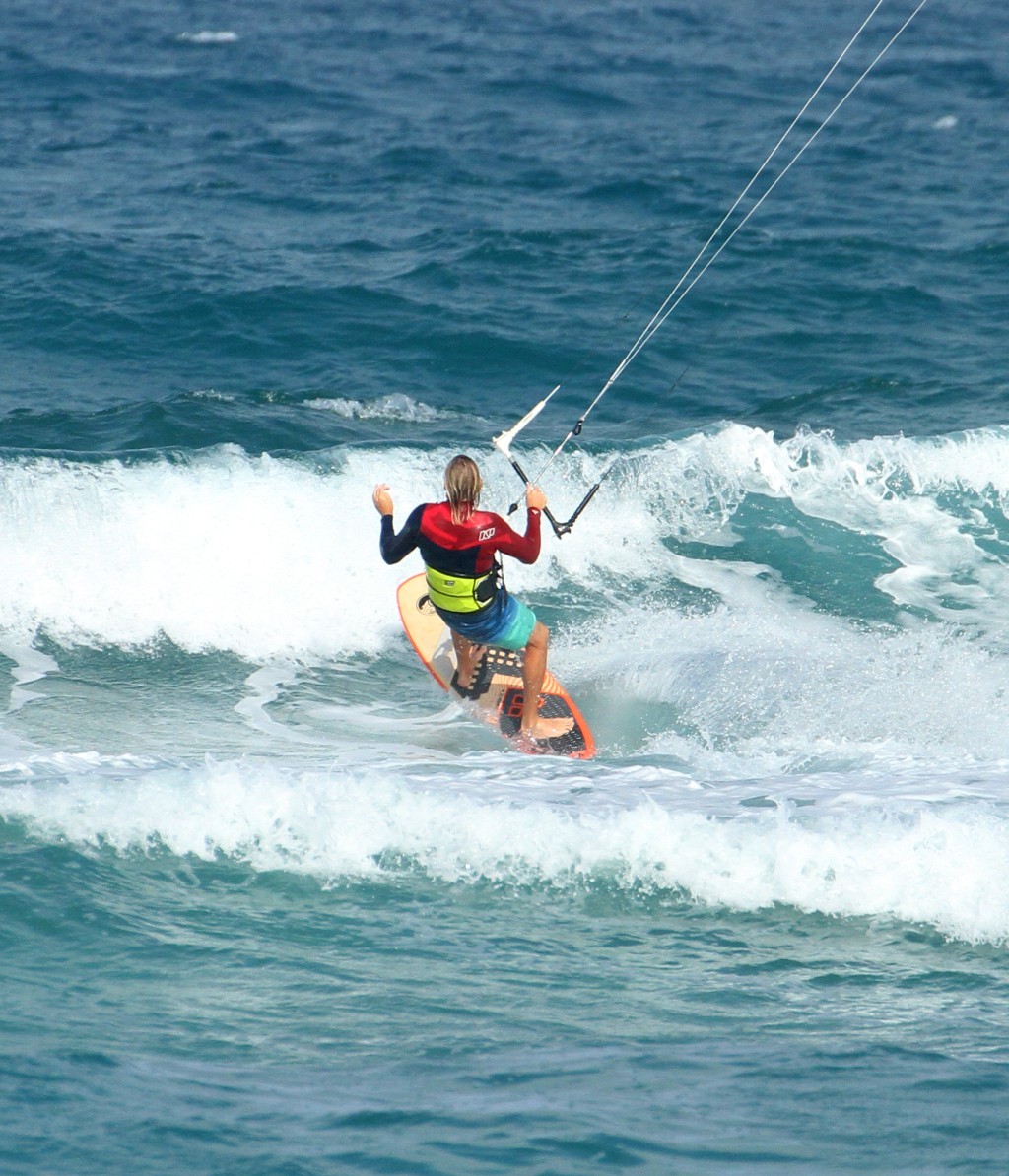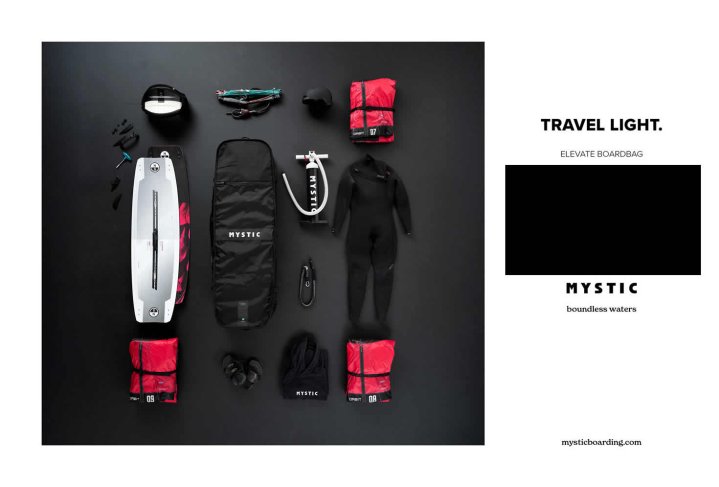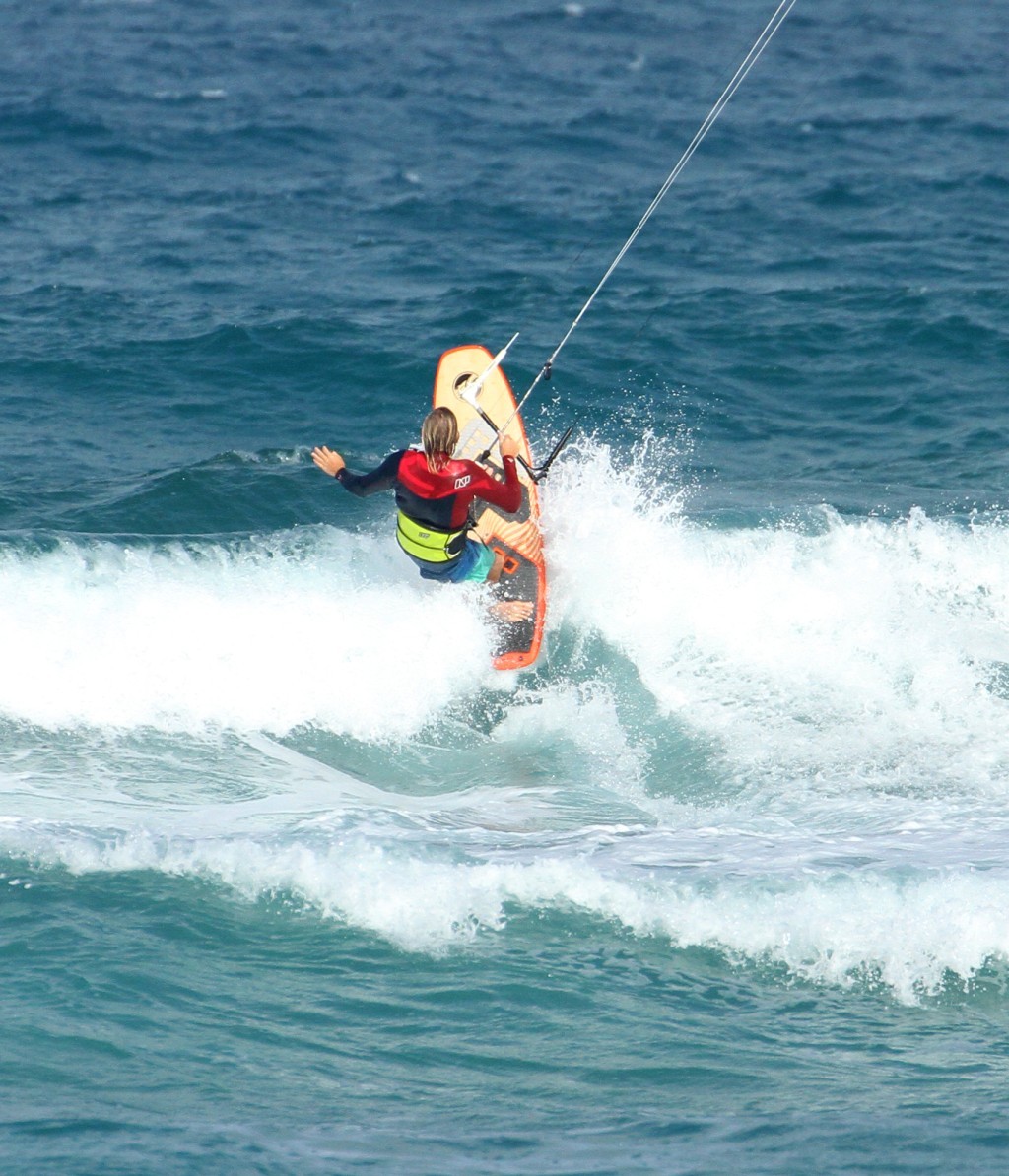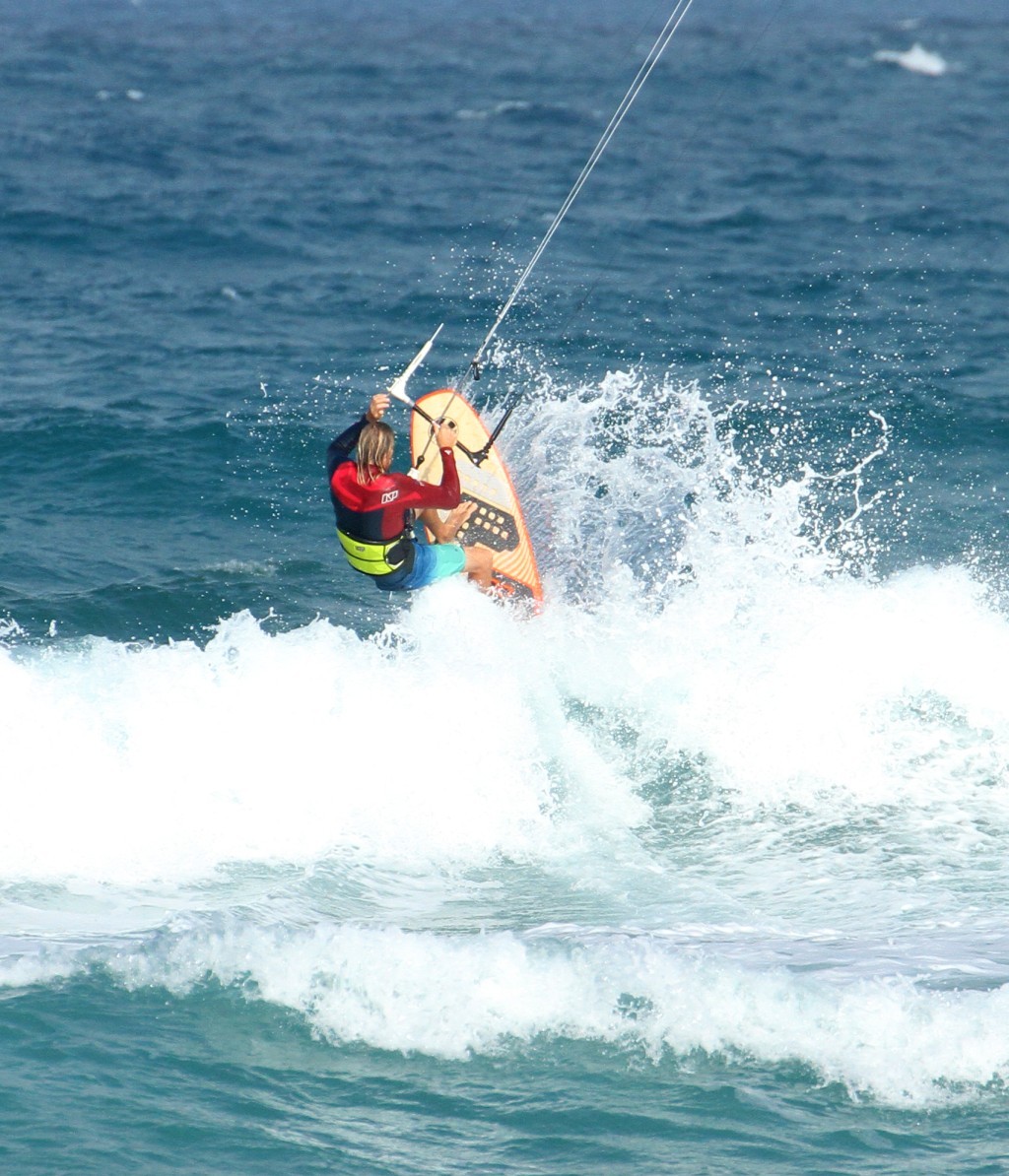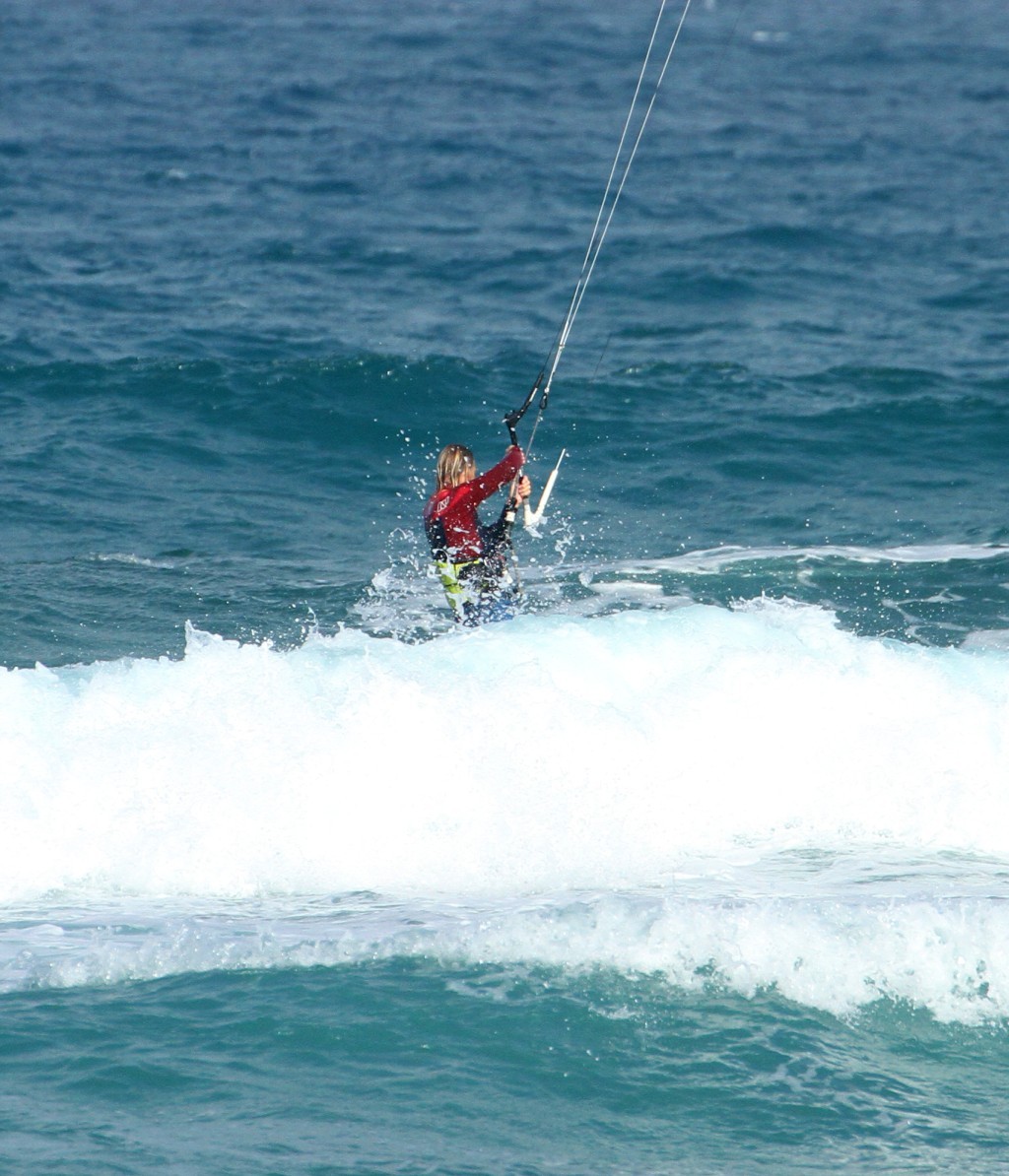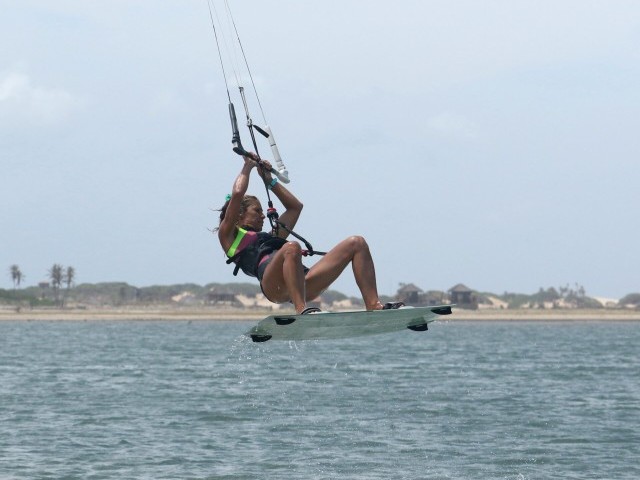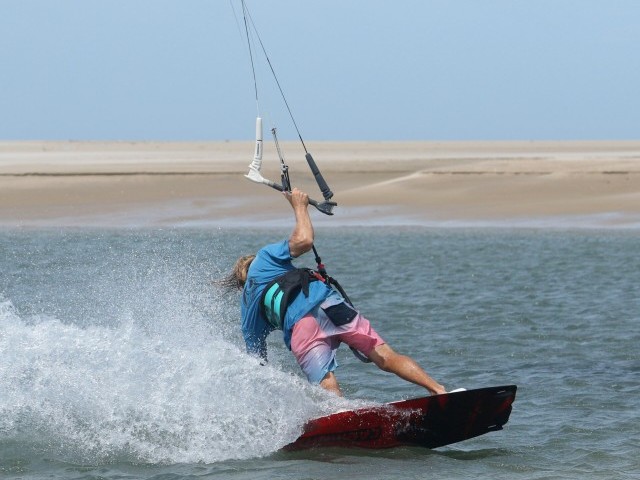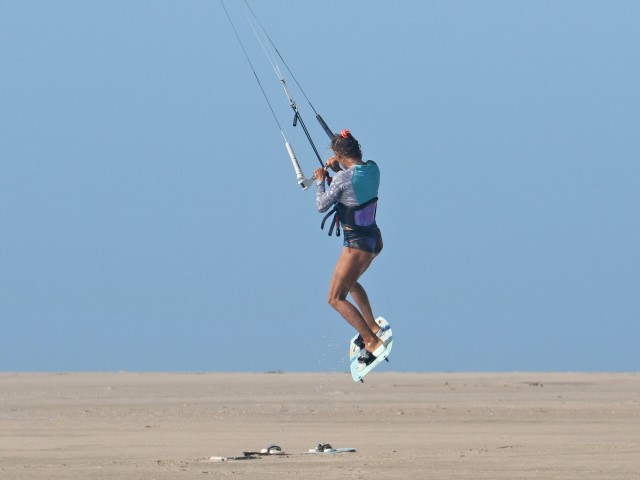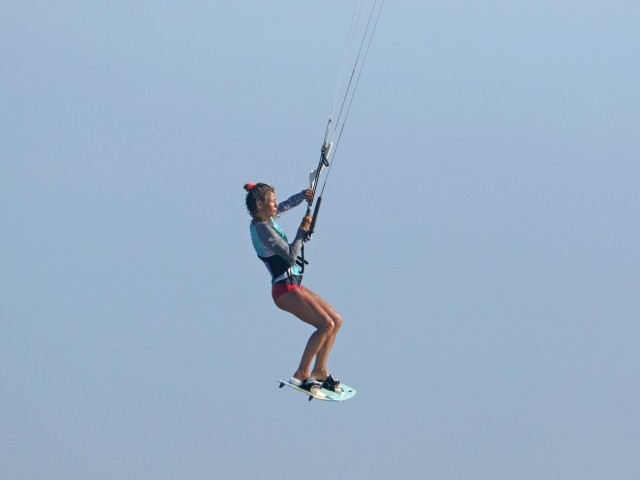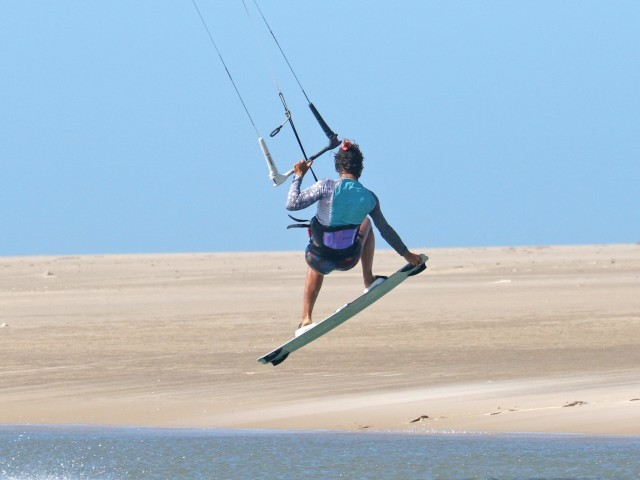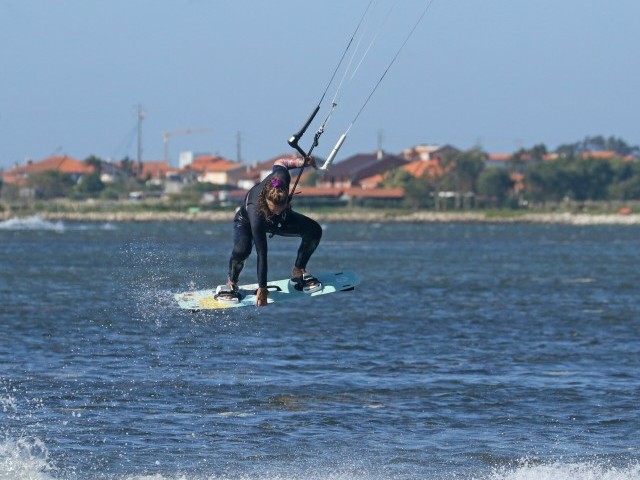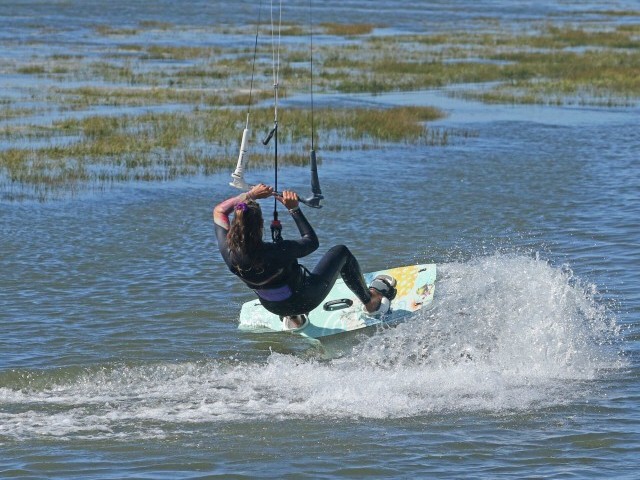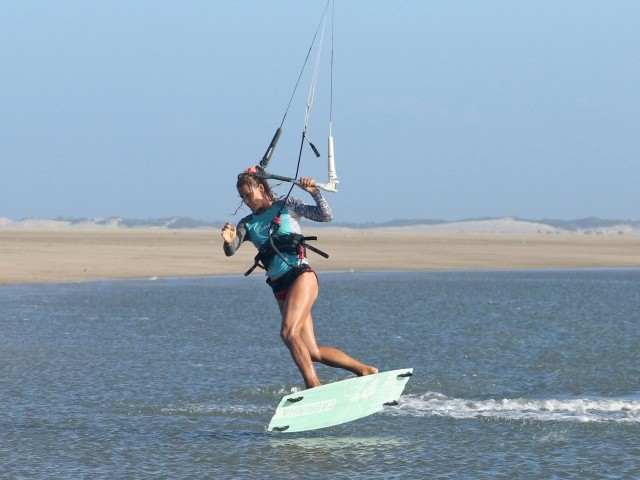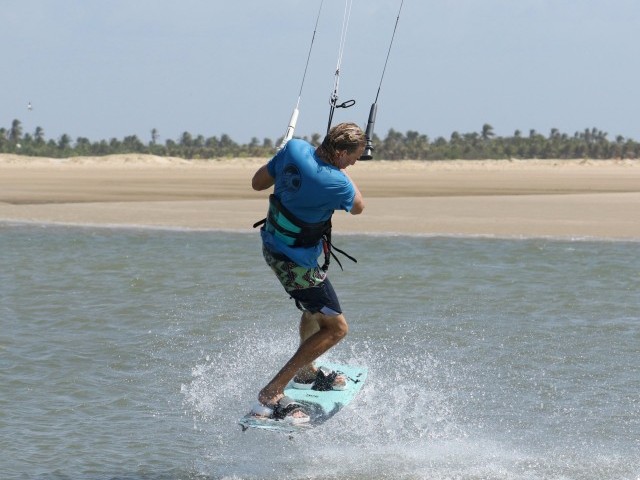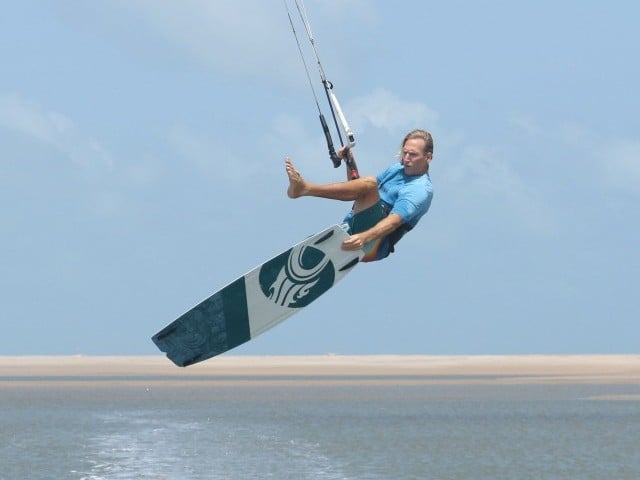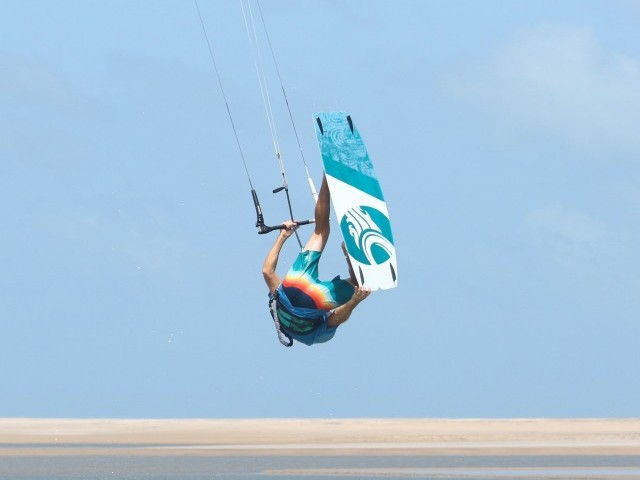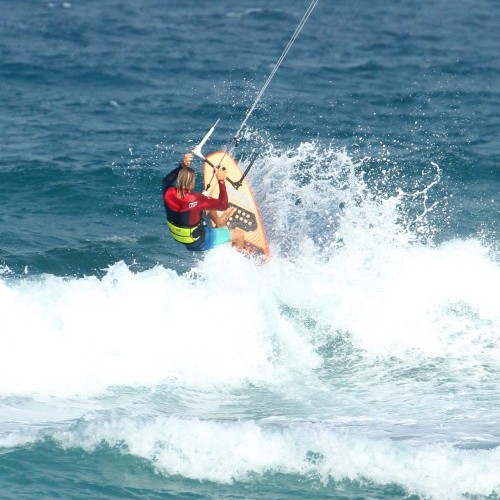
Getting Out, Over and Through the White Water on a Surfboard
Technique / Intermediate
Introduction
Enjoying the waves, especially if you are strapless, also entails the often tricky challenge of first getting out over the foamy stuff and steeper walls. Once you’re confident at this, you’ll be able to relax, which in turn will make it simpler, you’ll save a load of body dragging back to the beach to retrieve your board and you’ll have more time to lose yourself in the playground. Wind direction can make this more demanding still, if the wind is cross on-shore, or at times near impossible if the wind is bang on-shore! The good news is that much like anything, there is a technique that will at the very least better your odds.
We’ve chosen to go through this with a cross on-shore wind, from the left, as it’s a fair representation of the battle ahead, and will then need only a the tiniest of tweaking to handle other possibilities. It’s also worth noting that it’s not only about how you get over waves and white water but also the path that you pick. A straight line from A to B will often not be the most effective route out, and with time on the water you’ll learn to read the best way out, bearing away and heading up to find the perfect path whilst avoiding the worst sections. This also includes the occasional chicken gybe or tack if you think it’s preferable to getting washed - remember there’s no shame.
Here we’ll concentrate on what to do with the kite, the board and yourself to make getting out back as effortless as possible. You will need enough power to be happily planning out and your feet should be in a relatively wide stance so that you can control the board and maintain balance.
Choosing Your Target Pic A.
When heading out and noticing a lump rising in front of you, your primary concern is to work out where you’d like to cross it, and if you actually have a choice. If you’re waddling out in a wind shadow, you won’t be very mobile, so you’ll play the part of the hunted and readily welcome whichever part of the wave chooses you. However, if you’re moving and have power in your kite you need to assess the wave, so that you can choose to bear away to a softer spot, head up to a friendlier part, accelerate to get there sooner before it breaks, or slow down so that it breaks, and you can then deal with the white-water.
Much of this will come with experience. If you know the spot and how the waves there form and break, it’ll be easier. However, if you’re reading this and you’re attacking some onshore European mush your guess will be as good as ours. Suffice to say the one place you don’t want to be is just where the wave is breaking and pitching. Here it has the most power and it’s more likely to grab you, or at least your board. When you see a wave steepening you must decide if you can get there before it breaks, or move to where it has broken, preferably avoiding where it’s about to dump. Here Christian sees the wave ahead growing as it hits shallower water. He ponders his options and chooses a part of the wave that looks like it’ll be breaking softly before he gets there.
Speed Control Pic B.
Forward momentum will help you climb over a steep wave or approaching lump of white water. For sure when the obstacle is merely a small speed bump you can power over it with kite low and as much speed as you dare, but as soon as that lump is enough to make you think about it, moderation is key. Hitting anything at speed will have one of two results. If you’re lucky it’ll merely launch you upwards, great when you want to air it, but not always advisable if it separates you and your trusty steed and risks dumping you unceremoniously in the impact zone.
Version 2 is that you’ll stop, or rather the board will stop and wash back to the shore whilst you somersault over the back of the wave. Neither is a dream scenario. Therefore, slowing down so that you can control proceedings is advisable. This means that even if you’ve headed off downwind and accelerated to get to the wave in time, you’ll still need to throw out the anchors before reaching your target.
In this photo Christian is turning up into the wind to slow down and he’s also let his bar out a bit to help slow down. The good news is that you’ll want to turn up into the wave to meet it head on anyway, so not only will this slow you down, but it’ll put you in a good position to meet the white water. Final point here is that depending on where your sweet spot is, you may need to release your front hand so that you can twist upwind better while easing the bar out. This will assist with balance as you cross the wave too.
Kite High Pic C.
Once you’ve got control of your speed you can then get your kite into position. Naturally as you get more comfortable many of these steps will morph into one smooth action, but their order is important. If you’re still motoring off the wind like Alex Caizergues, then lifting your kite will only end in tears. Once you’ve carved up onto your rail and slowed, then you’ll keep control even as the kite rises. How much you lift the kite will depend on what you’re facing.
Larger lumps of white water will require you to get the kite higher, as you want as little weight on the board as possible, so that the foam can roll underneath you. However, if you’re going up a steep wave face, you still want some pull to get you over the wave to compensate for the wave’s push slowing you down as you go up it, and as such you’d keep the kite a tad lower. However, this all goes hand in hand with speed, power, momentum and wave force, so nothing is set in stone.
Christian knows that he needs to get over some white water, so he gives the bar a good yank to get the kite up high. As he is already carving up, he’ll have tension on the lines even though he’s already eased the bar out. Final point here, you need to drop your weight to counter the lift in the kite as you don’t want to unweight the board just yet.
Wheelie in Anticipation Pic D.
Now that you’re all set, you hopefully haven’t run out of time and hit the wave yet. Just like riding a bike up a curb, you need to lift the nose of the board before you reach the white water so that you don’t just plough straight into it. You also need to get your weight over the board so that you can soak up the oncoming energy, absorbing it by bending your legs and present as much surface area of the bottom of the board to get over the bubbles.
Christian bends his knees and drops his weight over the board to get off his rail and flatten it, before then moving his hips back behind the back foot. This change of weight will lift the nose and you can assist by lifting your front leg. It’s important that you don’t lean back with your shoulders. You can see that although Christian’s board is wheelie-ing, his shoulders are still parallel with the water. If you lean back it’ll be hard to stay over the board and get over the top of the wave.
Up & Over Pic E.
As you make contact with the wave it’s all about absorbing the energy, staying balanced over the board and letting the wave pass under you. This is where all the variables come into play. Regardless of size, if the wave is powerful or you’re travelling too quickly it will be hard to absorb the impact. To do so you must soak it up with your legs, allowing the wave to roll under you, rather than push the board through. Hitting it head on helps as you’ll use all the volume in the board to roll over the foam.
This is where kite position comes into play. With the kite high, you can hang on the bar and therefore support yourself under the kite. You can see that Christian stays small, which keeps him with the board, but by hanging under the kite he can take a lot of weight off the board, and as such it sea saws over the wave. However, it’s important to note that his kite isn’t at 12 o’clock, it’s still trying to pull him forwards, a fine combination of lift with some forward drive.
The Drop Pic F.
Once the wave passes underneath you, your main aim is to stay in contact with your board. Staying small is key so that as it drops down the back of the wave you can extend your legs, pushing your feet down onto the board. Gravity is also your friend as far as staying with the board is concerned, you no longer need any lift from the kite, so let the bar out. You can see that as Christian is passing over the wave he’s let the bar out, stayed small and compact and he’s reaching for the bar with his free front hand.
Work It Pic G.
Only one priority now and that’s to get moving again, and pronto. Behind the wave the white water is generally a bubbly mess with little resistance and potentially it’ll be moving a lot. In this impact zone you’ll often feel underpowered, not for lack of wind but due to the water movement. To get going you’ll need to work the kite like your first ever knee skimming downwind body drag, so really give it the beans. You can see as Christian drops down behind the wave he’s back on the board and diving the kite hard to get moving. Don’t forget there might be another one on the way and it’s always preferable to be in motion!
Top Tips
First off and foremost know your limits. As fun as waves are, the kite can give one the ability to get out into conditions that aren’t perfectly suitable. Wobbling out on a windsurfer or paddling out on a surfboard is quite self-regulating, whereas you can get lucky powering out with a kite.
Bear in mind that if the wind has any on-shore in it, when a wave pushes you, you’ll be moving towards your kite and therefore loosing tension, increasing the likelihood of dropping the kite. And if you do, the waves can push you forwards into saggy lines, or the kite can drag in a wave and pull you under.
Assuming that you’re within your comfort zone, you need to be awake to your environment. Getting out requires concentration and focus, however you still need to be aware of what is around you, other kiters and obstacles as well as the wave or foam you’re aiming for next. You need space to lift your kite to get over and you need space to dive your kite to continue, so keep your vision broad.
As far as other wind directions go:
If the wind is more onshore, you’ll need to carry more speed as you’ll be turning into the wind to get over the white water.
If the wind is side shore, you’ll need to slow down without heading up too much so that you can still meet the wave head on.
If the wind has any off in it, be careful. You won’t be able to tackle it head on, and with the board positioned across the face it’s much harder to absorb the power. You’ll feel the wave much more as it will be working against the pull of the kite. It can be quite violent and your knees will move more swiftly towards your chest and chin than you’d expect. Approach with caution, the kite high and as little edge as possible.
Now have a look at the sequence and videos to see all the elements combine in real time.
Common Mistakes
Wrong place, wrong time. This happens to everyone, regardless of ability and experience. The Ocean is ever changing and not always easy to read. If you mistime your approach and the wave grabs your board, you can do a lot worse than at least getting yourself over the wave and keeping tension in the lines.
Too fast. Speed into waves is perfect for jumping and hopping over little lumps. Once something more serious is in your path moderation is key.
No Wheelie. Waiting for the wave to push your board up may work sometimes, but if you already present the underside to the white water, it’ll often happily oblige by rolling under it.
Leaning back and extending back leg. This will get the nose up, but unfortunately you’ll likely be off balance and if you can’t get over the wave you’ll tip backwards and have the board and wave tumbling over you – best avoided.
Keystones
- Pick your spot to cross
- Head up, slow down, lift kite
- Stay small and wheelie into wave
- Absorb wave with soft legs
- Dive hard to get moving
This technique article was in Issue 74 of IKSURFMAG.
Related
By Christian and Karine
Christian and Karine have been working together as a coaching team, running improver to advanced kitesurfing clinics since 2003.






